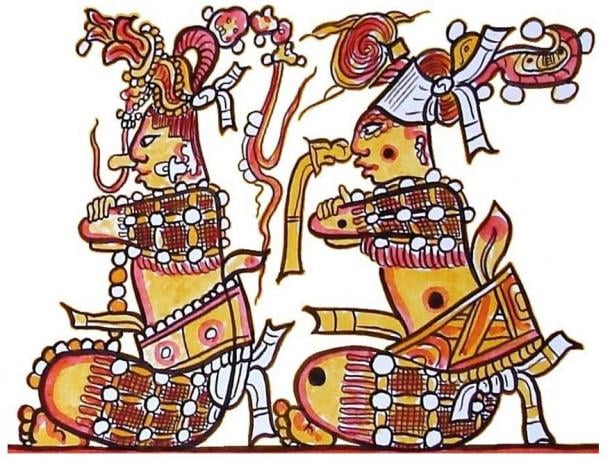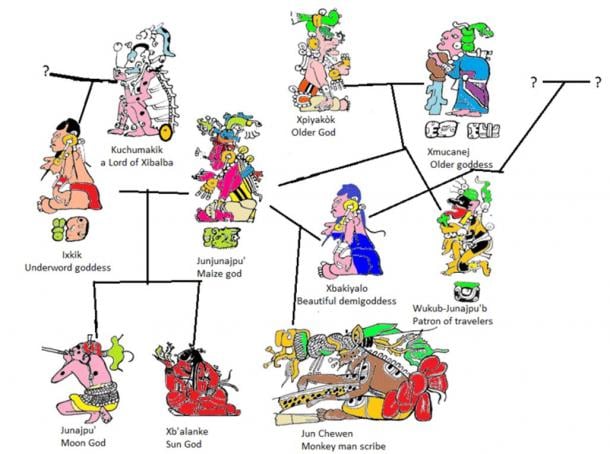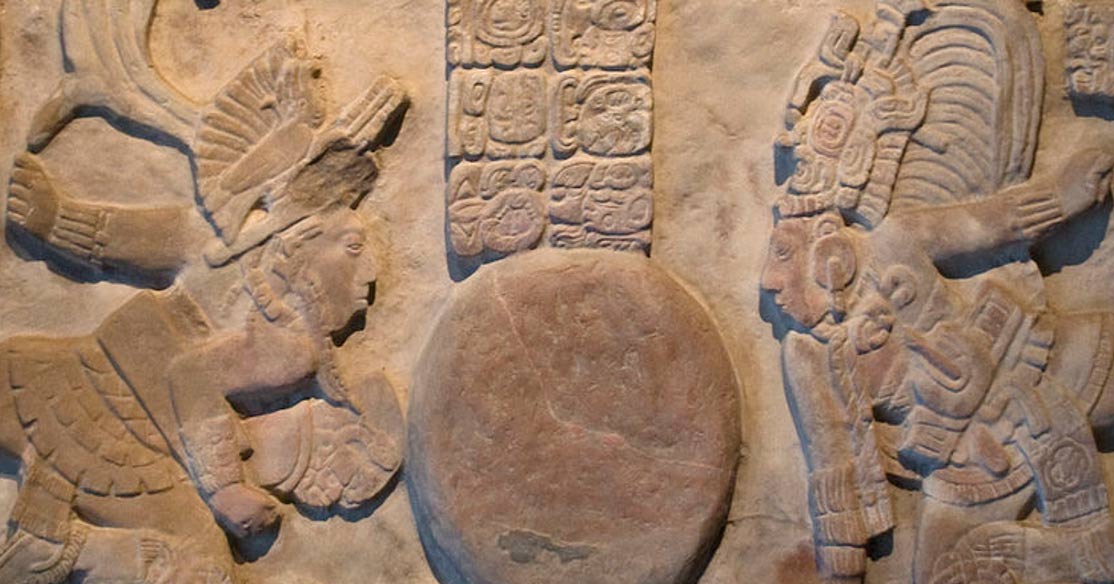Popol Vuh: The Sacred Narrative of Maya Creation
One of the most famous of all creation stories is that found within the Book of Genesis, where the Judaeo-Christian god is said to have created the world in six days. Prior to the coming of Christianity to Mesoamerica, its peoples also had their own creation myths, the most significant that we know of today being the Popol Vuh.
The Popol Vuh (variously translated as ‘The Council Book’, ‘The Book of the People’ or literally as ‘The Book of the Mat’) is the corpus of mythological and historical narratives, including the creation story according to the Quiché-Maya people. These were a branch of the Maya that dominated the western highlands of modern day Guatemala prior to the arrival of the Spanish in the 16 th century.
It has been suggested that the Popol Vuh is a compilation of oral traditions, and is believed to have only been written down some time in the middle of the 16 th century. As the Spanish did not tolerate the spiritual beliefs and practices of their conquered subjects, they began to destroy the literary works of the Quiché-Maya people. Fortunately, the Popol Vuh survived, and was translated into Spanish in the 18 th century by the Dominican friar and linguist, Francísco Ximénez.

The 18 th century translation of the Popol Vuh (Wikimedia Commons)
The Popol Vuh may be divided into three parts. The first part pertains to the creation of the world, whilst the second and third parts are about the Hero Twins Story and the Genealogy of the Quiché-Maya Dynasty respectively. In the creation myth of the Popol Vuh, there were two creator gods, Gucumatz and Tepeu. After creating the earth out of the primordial sea, they decided to populate it with animals. They realized later that the animals were unable to speak, and so could not worship, invoke, or glorify them. Thus the gods failed with their first effort.
How else can we be invoked and remembered on the face of the earth? We have already made our first try at our work and design, but it turned out that they didn’t keep our days, nor did they glorify us.
In order to be worshipped, the gods decided to create human beings, whilst the animals became food for humans.

The Maya Hero Twins, known from the Sacred Book of the Maya, the Popol Vuh: Junajpu and Xbalanq´e. Painted by Lacambalam. Motif taken from an ancient Maya ceramic. (Wikimedia Commons)
The gods first attempted to create human beings with mud. It was, however, a mistake:
But they saw that it was still not good. It merely came undone and crumbled. It merely became sodden and mushy. It merely fell apart and dissolved. Its head was not set apart properly. Its face could only look in one direction. Its face was hidden. Neither could it look about. At first it spoke, but without knowledge. Straightaway it would merely dissolve in water, for it was not strong.
Next, the gods experimented with wood. The people carved out of wood could speak, and began to populate the earth. They did not possess, however, hearts and minds, and were destroyed by a flood. Those who survived were said to have been transformed into monkeys.
MORE
- The origins of human beings according to ancient Sumerian texts
- Aztec Creation myths
- How Internet helps to decode Mayan scripts
The Popol Vuh then goes on to narrate the ascent of Seven Macaw, a proud individual who meets his end at the hands of the Hero Twins, Hunahpú and Xbalanqué. The tale then shifts to Hun-Hunahpú and Vucub- Hunahpú, the father and uncle of the Hero Twins. Prior to the birth if the Hero Twins, Hun-Hunahpú and Vucub- Hunahpú were invited by the Lords of the Death to a ball game in Xibalba, where they were murdered. After numerous adventures in the Underworld, the Hero Twins destroy the Lords of Death, and subsequently become the Sun and the Moon.

The family tree of the gods and demigods of the Popol Vuh. (Wikimedia Commons)
After the story of the Hero Twins, the Popol Vuh returns to the creation of human beings. This time, the gods succeed, and human beings were created out of maize. Until today, maize is still seen as a sacred and divine food, and honoured as such.
This time the beings shaped by the gods are everything they hoped for and more: not only do the first four men pray to their makers, but they have perfect vision and therefore perfect knowledge.
This perfection alarmed the gods. It is obvious from the writings in Popol Vuh that the gods did not want these creations to have the ability to become like gods themselves, but simply wanted to limit the capacity of humans to mere worship. According to Popol Vuh, that is what they achieved in that fourth and last experiment of creation.
The gods are alarmed that beings who were merely manufactured by them should have divine powers, so they decide, after their usual dialogue, to put a fog on human eyes. Next they make four wives for the four men, and from these couples come the leading Quiché lineages.
The Popol Vuh concludes with an extensive genealogy of the Quiché-Maya dynasty up until the 16 th century, connecting the royal family with the legendary gods in order to assert rule by divine right. which has provided historians with a fascinating window into the civilization of the Maya.
Featured image: The Third creation of the Universe by Toniná Divine Lords, Garra of Jaguar (left) amd Kinich Baknal Chaal (right). National Museum of Anthropology, Mexico City (Wikimedia Commons)
Suggested Book
Popol Vuh: The Definitive Edition of The Mayan Book of The Dawn of Life and The Glories of Gods and Kings
References
BBC, 2014. A History of the World in 100 Objects, Episode 9 - Maya Maize God Statue. [Online]
Available at: http://www.bbc.co.uk/ahistoryoftheworld/about/transcripts/episode9/
Maestri, N., 2015. Popol Vuh - History of the Quiché Maya Manuscript. [Online]
Available at: http://archaeology.about.com/od/mayaarchaeology/a/Popol-Vuh.htm
Popol Vuh[Online]
[Christenson, A. J. (trans.), 2003. Popol Vuh.]
Available at: http://www.mesoweb.com/publications/christenson/popolvuh.pdf
Smithsonian Institute, 2015. Creation Story of the Maya. [Online]
Available at: http://maya.nmai.si.edu/the-maya/creation-story-maya
The Newberry, 2015. Popol Vuh. [Online]
Available at: http://www.newberry.org/popol-vuh
www.utexas.edu, 2015. Popol Vuh. [Online]
Available at: http://www.utexas.edu/courses/stross/ant322m_files/popolvuh.htm
By Ḏḥwty



















Comments
Any information on the Mormon claim that they peopled the new world?
Just about every creation myth talks about the Twins. Pretty interesting. I think the knowledge that they possessed that made them like the Gods was the ability to reconnect with Creator Source and become one with the Universe.
Peace and Love,
Ricky.